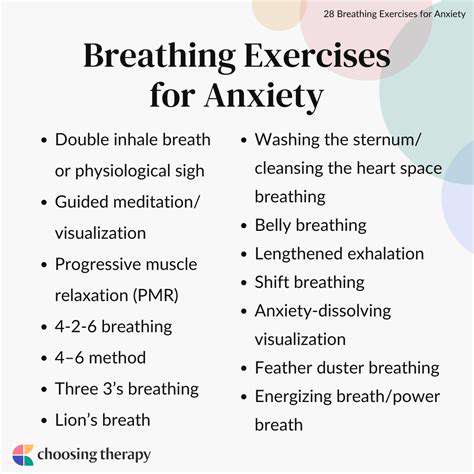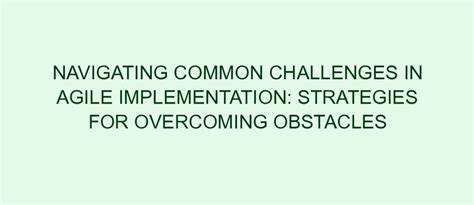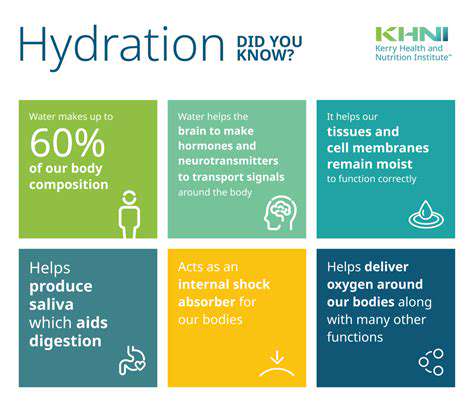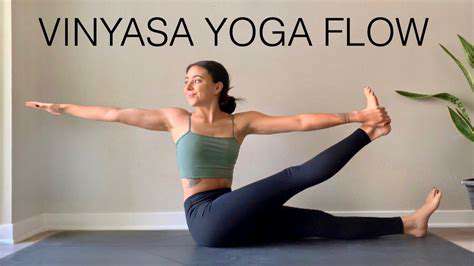Relaxation Techniques to Calm Your Mind Instantly
Deep Breathing Exercises for Immediate Stress Relief

Deep Breathing Techniques for Immediate Relaxation
Deep breathing exercises, often overlooked, are powerful tools for achieving immediate relaxation and managing stress. These techniques involve consciously focusing on the breath, slowing the respiratory rate, and expanding the lungs fully. Practicing deep breathing can significantly reduce feelings of anxiety and promote a sense of calm in high-pressure situations. By engaging in these exercises, individuals can effectively regulate their physiological responses to stress, promoting a more balanced and peaceful state of mind.
Implementing these techniques, even for short periods, can provide tangible benefits. The act of slowing down and focusing on the breath allows the body to release tension accumulated from daily stressors. This intentional focus can redirect the mind from anxious thoughts and worries, promoting a more present and centered experience.
Diaphragmatic Breathing Explained
Diaphragmatic breathing, also known as abdominal breathing, is a fundamental deep breathing technique that focuses on engaging the diaphragm, the primary muscle of respiration. By consciously contracting and relaxing the diaphragm, individuals can draw a deeper breath into the lower lungs, filling the abdomen with air. This type of breathing promotes a more efficient exchange of oxygen and carbon dioxide.
Proper diaphragmatic breathing involves placing a hand on the abdomen to feel the rise and fall of the stomach as you inhale and exhale. This physical sensation reinforces the engagement of the diaphragm. This technique is particularly beneficial for individuals experiencing anxiety or panic attacks, allowing them to regain control and calm their nervous system.
Benefits of Controlled Breathing
The benefits of controlled breathing extend beyond immediate relaxation. Regular practice can improve cardiovascular health by lowering blood pressure and heart rate. Consistent deep breathing can also enhance lung capacity, boosting overall respiratory function. Moreover, deep breathing exercises have been shown to reduce muscle tension and promote better sleep quality.
Chronic stress can have a detrimental impact on overall health, and controlled breathing is a powerful tool for mitigating these negative effects. It provides a natural way to regulate the body's response to stress, promoting physical and emotional well-being.
How to Practice Deep Breathing Exercises
Finding a quiet space where you can sit or lie down comfortably is the first step in practicing deep breathing exercises. Close your eyes and gently place one hand on your chest and the other on your abdomen. As you inhale slowly and deeply, notice your abdomen rising. As you exhale, feel your abdomen falling.
Focus on the sensation of the air entering and leaving your body. Try to maintain a consistent rhythm and pace. Begin with 5-10 minutes of practice and gradually increase the duration as you become more comfortable with the technique. Consistent practice is key to experiencing the full range of benefits associated with deep breathing.
Integrating Deep Breathing into Daily Life
Deep breathing exercises can be seamlessly integrated into daily routines. Practice them before important meetings or presentations to calm nerves. Use them during moments of stress or anxiety to regain composure. Incorporate short breathing exercises into your commute or during breaks at work to manage stress and improve focus.
Making deep breathing a regular part of your day can significantly improve your overall well-being and resilience in the face of daily challenges. By consciously incorporating these simple techniques into your lifestyle, you can cultivate a greater sense of calm and inner peace.
Advanced Deep Breathing Techniques
Beyond basic diaphragmatic breathing, explore variations such as box breathing, alternate nostril breathing, and progressive muscle relaxation techniques. Each offers unique benefits, including improved focus, reduced anxiety, and enhanced emotional regulation. Box breathing, for example, involves inhaling, holding, exhaling, and holding for equal durations, creating a structured and calming rhythm.
Experiment with different techniques to discover what resonates best with you. Remember that consistency is key in experiencing the full potential of these advanced breathing techniques. Learning and mastering various methods can provide a comprehensive toolkit for managing stress and enhancing overall well-being.
Sensory Stimulation for Calming Sensory Overload

Sensory Stimulation Strategies for Calming
Sensory stimulation plays a crucial role in managing stress and promoting relaxation. By engaging the senses, we can create a pathway to calm and reduce feelings of anxiety or overwhelm. Understanding how different sensory inputs affect us allows us to consciously choose experiences that support our well-being.
Different sensory experiences can trigger various responses in the body. For instance, certain textures, sounds, or smells can have a soothing or energizing effect. It's essential to be mindful of these responses and to use sensory stimulation techniques strategically to promote a sense of calm and well-being.
Tactile Stimulation for Relaxation
Tactile experiences, such as the feel of soft blankets, the comforting weight of a weighted blanket, or the gentle pressure of massage, can be incredibly effective for calming the nervous system. These tactile sensations can help to ground individuals, reducing feelings of anxiety and promoting a sense of security. Exploring different textures and applying gentle pressure can be a powerful tool for relaxation.
Experimenting with various textures, from smooth stones to fluffy fabrics, can evoke a sense of peace and calm. Engaging with different tactile sensations can be particularly beneficial for children and adults alike, promoting a deeper sense of connection to the present moment.
Auditory Experiences for Tranquility
The calming effects of soothing sounds, like nature sounds or gentle music, are well-documented. Listening to white noise, rain sounds, or classical music can create a sense of peace and quiet, helping to reduce stress and promote relaxation. These auditory experiences can help to drown out distracting noises and create a more tranquil environment.
Soft, instrumental music can have a profound impact on mood and emotional regulation. Such sounds can help to slow down the heart rate, lower blood pressure, and create a sense of calm and serenity. Creating a playlist of calming sounds can be a valuable tool for promoting relaxation in daily life.
Visual Stimulation for Mindfulness
Surrounding yourself with visually calming elements can significantly impact your mood. For example, looking at nature scenes, such as landscapes or flowers, can be incredibly soothing. The gentle colors and natural patterns can encourage mindfulness and reduce feelings of stress.
Visual stimulation techniques, such as gazing at a calming image or looking at a flowing water feature, can help to shift focus away from stressful thoughts and worries. Visual experiences can help to anchor individuals in the present moment and promote a sense of peace and tranquility.
Vestibular Stimulation for Grounding
Vestibular stimulation, involving movement and changes in position, can be crucial for grounding and promoting a sense of stability. Gentle rocking, swaying, or swinging can help to regulate the nervous system and create a feeling of calm and well-being. Simple activities like walking in nature or gentle exercise can have a profound effect on stress levels.
Olfactory Stimulation for Serenity
The sense of smell is powerfully linked to memory and emotion. Calming scents, such as lavender, chamomile, or sandalwood, can evoke feelings of peace and tranquility. Incorporating these scents into daily routines can create a more serene and relaxing environment. Creating a relaxing atmosphere with calming scents can have a remarkable effect on mood and stress levels. The power of scent to influence mood and behavior is undeniable.
Grounding Techniques to Center Yourself in Stressful Moments
Deep Breathing Exercises
Deep breathing exercises are a fundamental grounding technique, offering a powerful way to calm your nervous system and reduce feelings of stress. By focusing on your breath, you can shift your attention away from anxious thoughts and towards the present moment. Inhale slowly and deeply through your nose, filling your lungs completely. Hold the breath for a few seconds, and then exhale slowly through your mouth, releasing any tension you might be holding. Repeat this cycle several times, noticing the sensation of the air moving in and out of your body. This simple practice can significantly reduce your heart rate and blood pressure, promoting a sense of calm and centeredness.
Practicing mindful awareness of your breath can be particularly helpful during stressful situations. Pay attention to the sensation of the air entering and leaving your body. Notice the rise and fall of your chest or abdomen. Each breath is an opportunity to reconnect with the present moment and to ground yourself in the here and now.
Progressive Muscle Relaxation
Progressive muscle relaxation involves systematically tensing and releasing different muscle groups in your body. This technique helps to identify and release physical tension that often accompanies stress. Begin by clenching a specific muscle group, like your fists, for a few seconds, feeling the tension build. Then, slowly release the tension and focus on the feeling of relaxation. Move through different muscle groups, such as your shoulders, arms, legs, and face, repeating the process of tensing and releasing. As you become more familiar with the technique, you'll develop a deeper understanding of how your body responds to tension and relaxation, allowing you to identify and release tension more effectively.
Mindful Movement
Engaging in mindful movement, such as gentle yoga or tai chi, can be a powerful grounding technique. These practices combine physical postures and movements with focused attention on the present moment. As you move through the poses, pay attention to the sensations in your body – the stretch of a muscle, the weight of your limbs, the flow of your breath. This focused awareness helps to anchor you in the present, reducing the tendency to dwell on stressful thoughts or anxieties. Mindful movement can also improve your physical well-being, promoting relaxation and reducing stress hormones.
Grounding with Sensory Awareness
Grounding through sensory awareness involves paying close attention to the five senses. When feeling overwhelmed, focus on the physical sensations around you. Notice the texture of a surface, the feel of your clothes on your skin, the taste of food in your mouth. Listen to sounds around you, like the rustling of leaves or the hum of a refrigerator. This practice anchors you in the present moment and helps you to disconnect from negative thoughts and anxieties. Engage all five senses, including sight, smell, and sound. Connecting with these sensory experiences can help you to center yourself in the present moment.
Visualization and Imagery
Visualization and imagery techniques can be powerful tools for grounding yourself in stressful situations. Visualize a calming scene, such as a peaceful beach, a serene forest, or a cozy cabin. Imagine the details of the scene – the soft sand, the rustling leaves, the warmth of the fire. Focus on the sights, sounds, smells, and sensations of this imagined place. This mental imagery can help you to shift your focus away from stressful thoughts and towards a more peaceful and grounded state of mind. This practice allows you to mentally escape to a place of tranquility.
Connecting with Nature
Spending time in nature can be a powerful grounding technique. The sights, sounds, and sensations of the natural world can help you to reconnect with the present moment and reduce feelings of stress. Take a walk in a park, sit by a lake, or simply observe the trees and plants around you. Notice the colors, textures, and smells of nature. Allow yourself to be fully present in the environment, letting go of your worries and anxieties. Connecting with the natural world can provide a sense of peace and calm, helping you to regain perspective and center yourself.
Connecting with Loved Ones
Connecting with loved ones can be a valuable grounding technique. Talking to a trusted friend, family member, or partner can provide emotional support and help you to feel more connected and centered. Sharing your feelings and concerns can help to alleviate stress and anxiety. This supportive connection can foster a sense of belonging and security, grounding you in a web of love and understanding. Building strong connections with others can help you to navigate stressful situations with greater resilience and emotional stability.
Read more about Relaxation Techniques to Calm Your Mind Instantly
Hot Recommendations
-
*Guide to Managing Gout Through Diet
-
*Best Habits for Financial Well being
-
*How to Build a Routine for Better Mental Health
-
*How to Eat Healthy on a Budget [Tips & Meal Ideas]
-
*Guide to Practicing Self Acceptance
-
*How to Incorporate More Movement Into Your Day
-
*Guide to Managing Chronic Pain Naturally
-
*Guide to Building a Reading Habit for Well being
-
*Top 5 Weight Loss Supplements That Actually Work
-
*Best Exercises for Postpartum Recovery [Beyond Abdominal Work]











